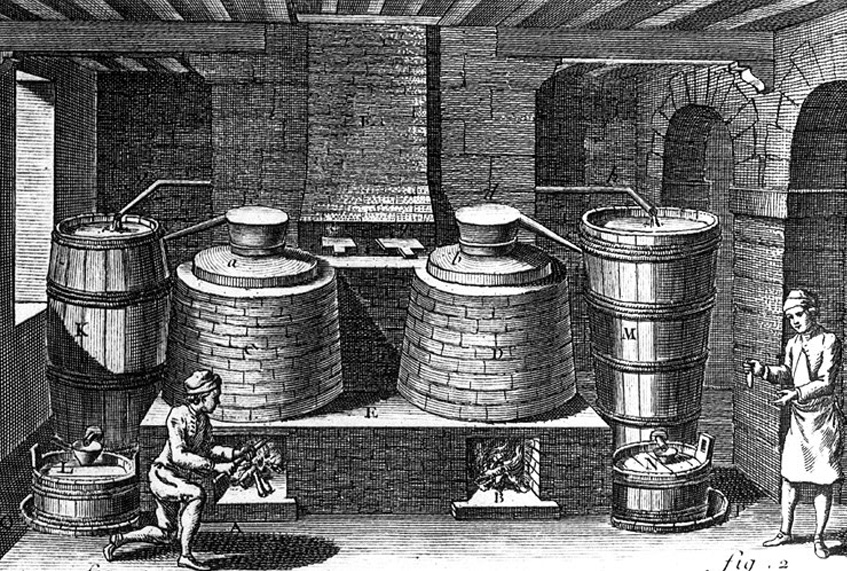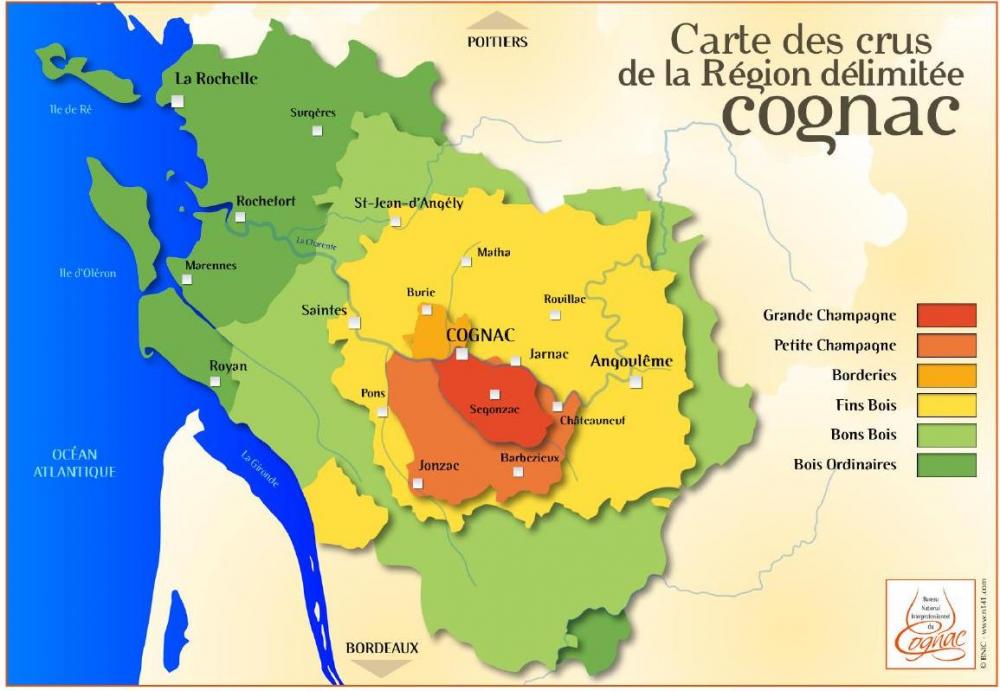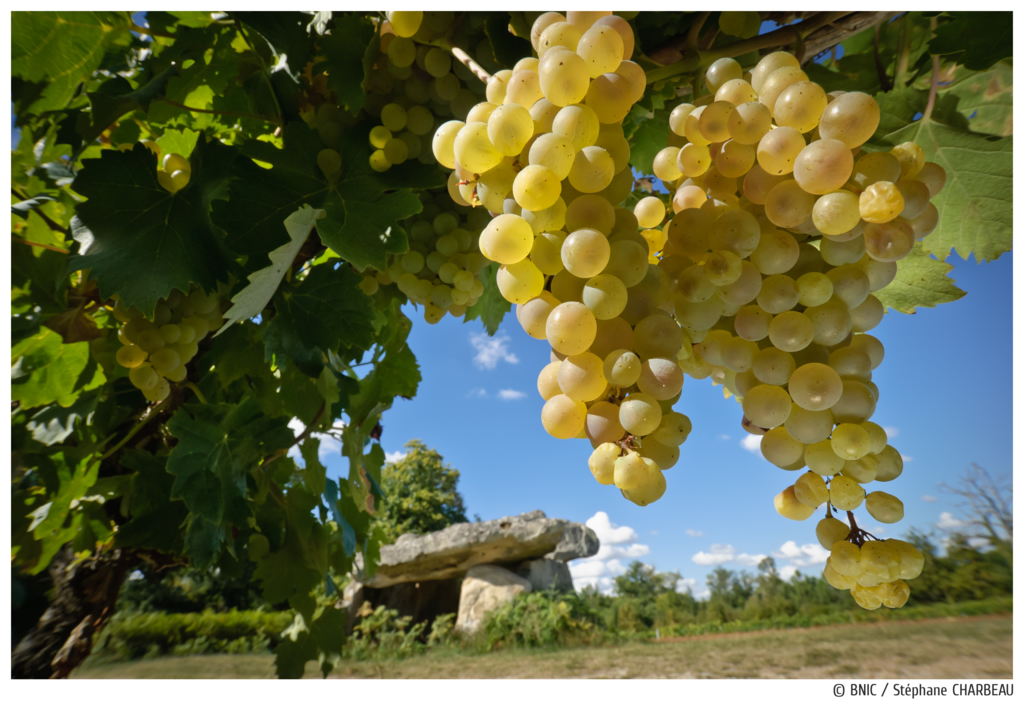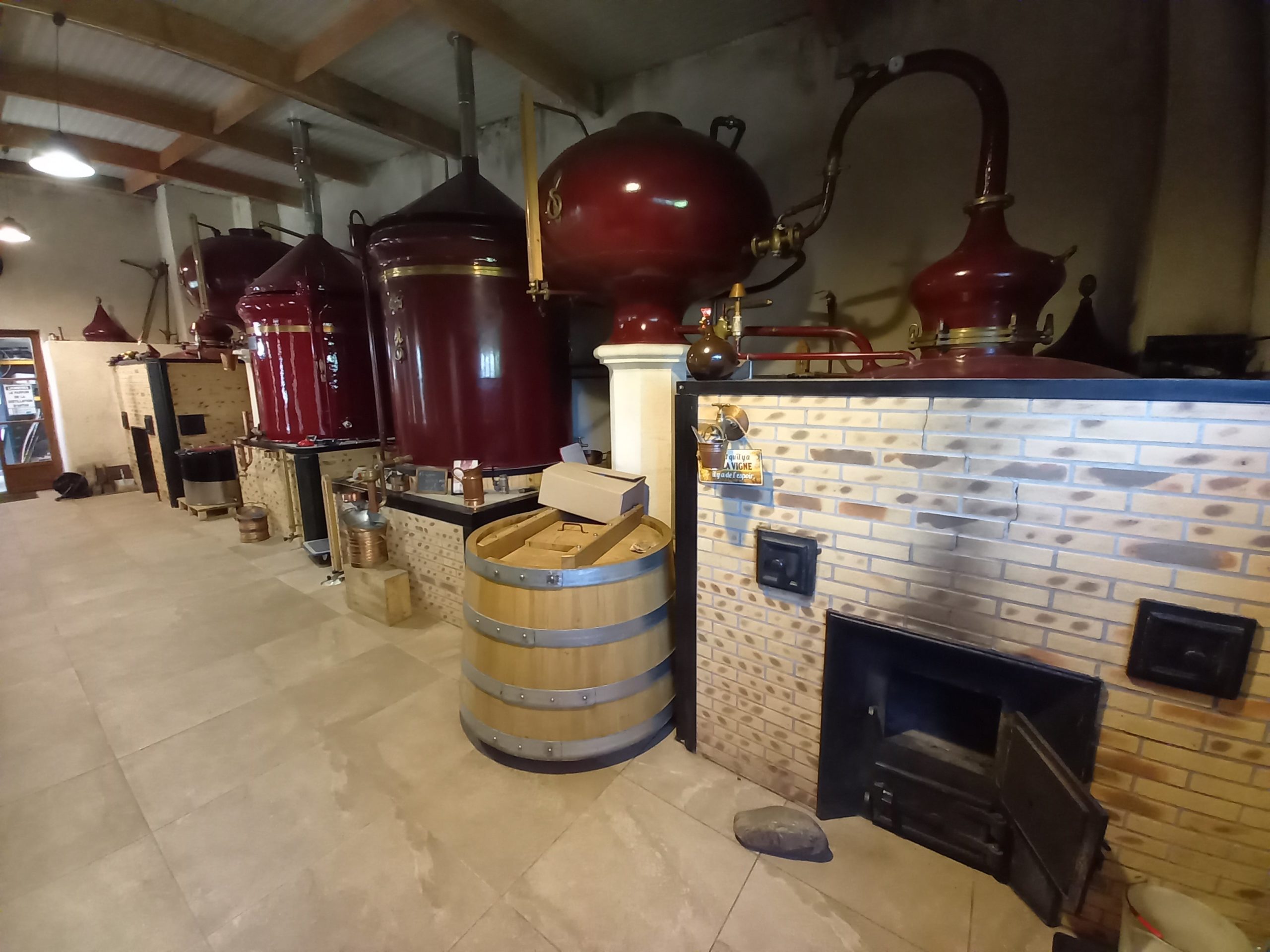Cognac
Son histoire
Les premières plantations viticoles dans les Charentes apparaissent dès la fin du Ier siècle après J.-C. Au Moyen Âge, la ville de Cognac se distingue déjà pour son commerce du vin.
A la Renaissance, le commerce connaît un essor important. Les vaisseaux hollandais viennent chercher à Cognac et dans les ports charentais les vins renommés des crus de « Champagne » et des « Borderies ». Mais ces vins, d’un degré alcoolique peu élevé, souffrent de la longueur des voyages en mer. La connaissance de l’art de la distillation par les Hollandais les incite à distiller le vin, pour mieux le conserver. Ils le nomment « brandwijn » (ce qui signifie littéralement « vin brûlé »), qui donnera le nom « brandy », eau-de-vie de vin.
Au début du XVème siècle apparaît la double distillation qui va permettre au produit de voyager sous forme d’eau-de-vie inaltérable, bien plus concentrée que le vin.
Dès la fin du XVIIème siècle, et surtout à partir du siècle suivant, le marché s’organise et, pour répondre à la demande, des affaires de négoce se créent. Les « comptoirs », certains d’origine anglo-saxonne, s’installent dans les principales villes de la région Martell, Rémy Martin, Hennessy, Courvoisier, Camus…
Mais en 1875 apparaît en Charente la crise du phylloxéra. Cet insecte, qui attaque la vigne en suçant la sève de ses racines, va détruire la plus grande partie du vignoble, qui ne recouvrira plus, vers 1893, que 40 600 hectares, contre 280 000 hectares avant la crise.
L’Ugni blanc va devenir alors, vers le milieu du XXème siècle, le cépage très majoritairement utilisé, plus résistant que les cépages traditionnels utilisés avant la crise (notamment la Folle Blanche).
Dans la première moitié du XXème siècle, une législation relative au Cognac est mise en place pour consacrer les usages locaux, loyaux et constants :
- 1909 : délimitation de la zone géographique de production ;
- 1936 : reconnaissance du « cognac » en tant qu’Appellation d’Origine Contrôlée ;
- 1938 : délimitation des appellations régionales (crus ou dénominations géographiques).
Historiquement produit d’exportation, le « cognac » est aujourd’hui consommé à plus de 95% à l’étranger par des consommateurs situés dans près de 160 pays différents.

Son terroir

Henri Coquand (1811-1881), professeur de géologie, étudie au milieu du XIXème siècle la géologie de la région et valide avec un dégustateur un classement des différentes zones, selon la qualité des eaux-de-vie que leurs sols peuvent produire. En effet, les eaux-de-vie obtenues à la sortie de l’alambic sont marquées par une grande diversité analytique et organoleptique issue notamment de leur origine. Cette diversité va imposer la mise en œuvre de techniques de vieillissement différentes, sur des durées variables.
Ce travail débouchera vers 1860 sur la délimitation de différents « crus » et servira de base au décret du 13 janvier 1938 délimitant ces crus. Les dénominations géographiques complémentaires à l’appellation Cognac sont toujours utilisées sous leurs noms historiques :
- Grande et Petite Champagne (40% de la production) : sols argilocalcaires assez superficiels sur calcaire tendre, crayeux. Grande et Petite Champagne donnent naissance à des eaux-de-vie d’une grande finesse et marquées par beaucoup de distinction et de longueur, au bouquet à dominante florale. De maturation lente, ses eaux-de-vie demandent un long vieillissement en fût de chêne pour acquérir leur pleine maturité.
- Borderies (5% de la production !) : sols silico-argileux, à silex résultant de la décarbonatation du calcaire. Ce vignoble produit des eaux-de-vie rondes, bouquetées et douces, caractérisées par un parfum de violette. Elles ont la réputation d’acquérir leur qualité optimale après une maturation plus courte que les eaux-de-vie provenant des « Champagne ».
- Fins Bois (42% de la production) : sols argilocalcaires superficiels rouges et très caillouteux. Les Fins Bois représentent le vignoble le plus vaste. Ils produisent des eaux-de-vie rondes, souples, vieillissant assez rapidement et dont le bouquet fruité rappelle le raisin pressé.
- Bons Bois et Bois ordinaires (13% de la production) : sols sableux en secteurs côtiers, dans certaines vallées et dans toute la partie sud du vignoble. Les Bons Bois produisent des eaux-de-vie aux arômes fruités qui vieillissent rapidement.
Ses cépages
Le vignoble dédié à la production du Cognac couvre aujourd’hui environ 75 000 hectares, soit 95 % du vignoble de l’aire. L’Ugni blanc est le cépage le plus planté depuis la crise du phylloxéra : il représente aujourd’hui près de 98 % du vignoble, suivi par le Colombard, la Folle Blanche, le Montils, le Sémillon et le Folignan (croisement entre l’Ugni blanc et la Folle Blanche).

Sa distillation et son vieillissement

La distillation mise en œuvre à Cognac est une distillation discontinue, ou double distillation, dite également « à repasse ». L’alambic utilisé, dit « charentais », a des caractéristiques (forme, matériau, capacité et mode de chauffage) définies depuis 1936, déterminantes pour la qualité des eaux-de-vie.
Lors du vieillissement, l’eau-de-vie nouvelle va séjourner plusieurs années (parfois plusieurs décennies) sous bois de chêne, dès sa sortie de l’alambic. Le chêne de type grain fin (Tronçais) ou gros grain (Limousin), Quercus petraea (sessile ou rouvre) ou Quercus robur (pédonculé) selon les usages, a été choisi en raison de sa capacité à permettre sur de longues durées les échanges entre l’eau-de-vie, le milieu extérieur et le bois.
Les mentions de vieillissement suivantes sont communément utilisées :
- VS (Very Special) : la plus jeune eau-de-vie de l’assemblage est âgée de deux ans au minimum ;
- VSOP (Very Superior Old Pale) : la plus jeune eau-de-vie de l’assemblage est âgée de quatre ans au minimum ;
- Napoléon, XO (eXtra Old), extra ou hors d’âge : la plus jeune eau-de-vie de l’assemblage est âgée de six ans au minimum, et dix ans après 2018.
Par ailleurs, contrairement à l’Armagnac, les millésimes sont très rares, du fait que les eaux-de-vie commercialisées sont, dans la grosse majorité des cas, le fruit d’assemblages.